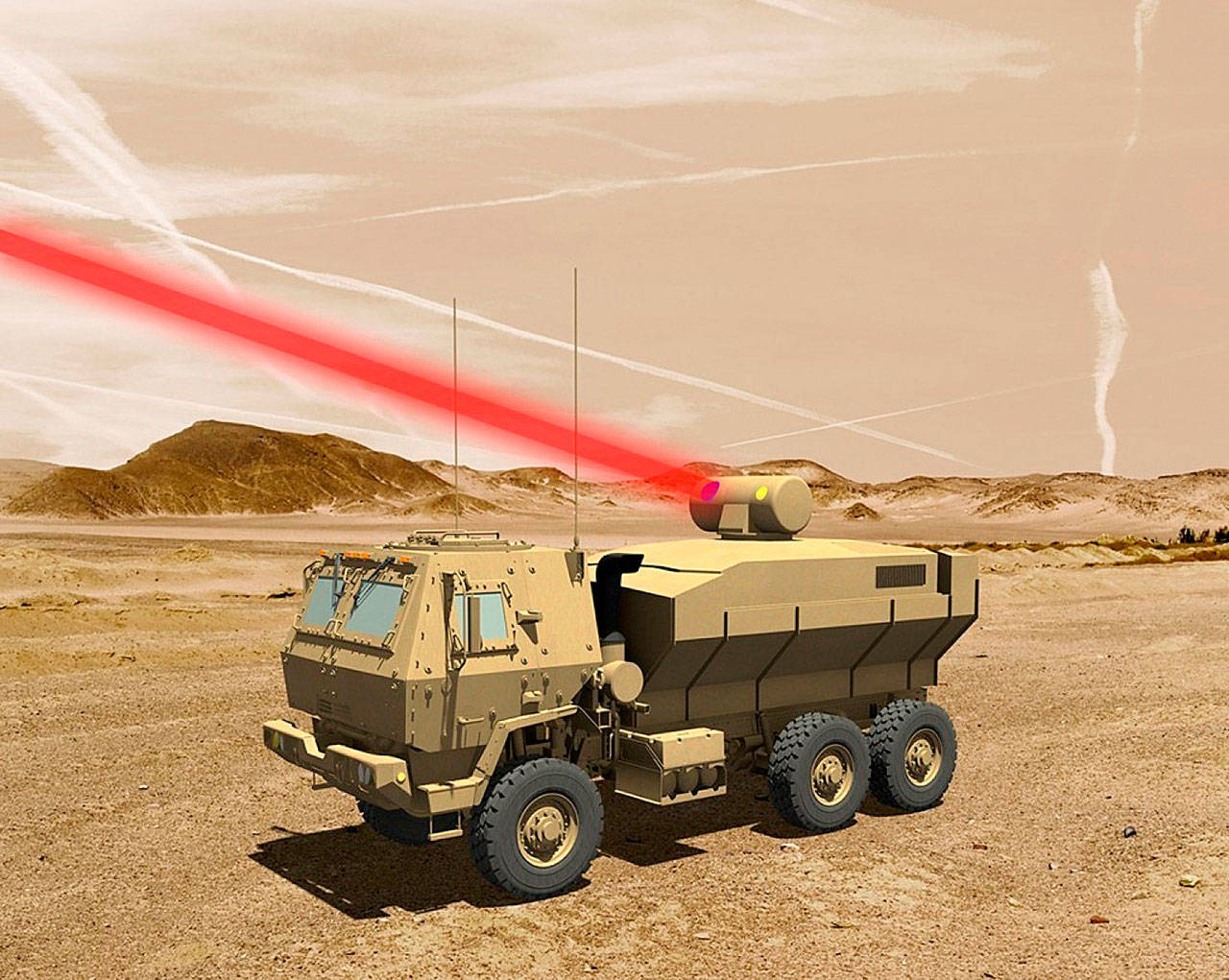By Aaron Gregg, The Washington Post
Lockheed Martin said Thursday it has finished a 60-kilowatt laser system for the U.S. Army Space and Missile Defense Command and is preparing to hand it over to the Army for further testing. In initial tests, the company achieved 58 kilowatts of power but expects its laser to reach its full potential by the time of its delivery in the next few months.
The laser is what the company calls a “combined fiber” laser beam, bringing together individual lasers to form a single, stronger beam. Lockheed has been testing it at an installation in Bothell and plans to ship it to an Army installation in Huntsville, Alabama., in the next few months.
“We’re really at the dawn of an era of the utility of laser weapons,” said Robert Afzal, senior fellow for laser and sensor systems at Lockheed Martin. The Army’s specialized military vehicles “can now carry something which is small enough and powerful enough for what we believe will be militarily useful.”
Multiple military agencies and defense companies have been working on laser weapon capabilities. In 2014, Boeing published a video of its 10-kilowatt laser destroying a mortar in flight.
Proponents say lasers could be cheaper than traditional munitions systems because they don’t require expensive projectiles and they don’t need to be reloaded. That could make the system useful in taking down airborne adversaries, such as off-the-shelf drones.
The idea of an off-the-shelf drone fleet commanded by a non-state entity presents new challenges for a global military establishment that has focused for centuries on war with other governments. For example, Gen. David Perkins said this week that a U.S. ally had taken down an adversary’s off-the-shelf quad-copter — which can be purchased online for a few hundred dollars — with a multimillion-dollar Patriot missile.
Mark Gunzinger, a senior fellow at the Center for Strategic and Budgetary Assessments, said: “That’s $3 million to shoot down a three-or-four-hundred-dollar drone … What if you could do that with a beam of light that costs a buck?”
More powerful projectiles such as Hellfire missiles are also more likely to cause collateral damage, making them less practical in certain situations. Proponents say laser weaponry could be more precise and ultimately more effective against small airborne targets.
Lasers “hit targets at the speed of light, they cost almost nothing per shot, and they have an almost unlimited number of times they can be used,” said Loren Thompson, chief operating officer of the nonprofit Lexington Institute, which receives funding from defense firms including Lockheed Martin and Boeing. “A medium-sized laser should be able to take out any number of drones in a very short period of time because they are so fragile.”
The Navy has already deployed a ship-based laser that it says is ready for combat use, but the Army faces a unique set of challenges. To protect American soldiers from low-budget drone fleets, the Army would need a highly mobile laser that can sit on the back of a truck. The agency would have to find a way to carry enough battery power to fire continually without the truck overheating.
Such a large power source isn’t a problem if it’s stationary on a ship or military installation, but moving it around the battlefield might be difficult.
With the 60-kilowatt laser announced this morning, Lockheed says that it has reached that goal and that the weaponry is ready to be deployed.
“In terms of the maturity of this technology to be field-able on an Army vehicle, this technology is ready for that,” Afzal said.
The company said its initial testing showed the laser to be near physical limits for accuracy and reasonably energy-efficient, directing 43 percent of electricity used to power it directly into the laser itself, helping it deal with the mobility problem.
The system is designed to be a low-weight solution that sits on a ground-based vehicle called a Heavy Expanded Mobility Tactical Truck, essentially a truck designed for carrying large artillery.
The Army already has laser weapons it is testing, but Lockheed’s laser may have advantages in power and portability. The 60-killowatt laser has its origins in the Defense Department’s Robust electric laser initiative, which started in 2010 and ended when a 15-kilowatt laser was developed. The Defense Advanced Research Projects Agency, or DARPA, has its own initiative to create a turret-based laser that can fire downward from an aircraft.
Talk to us
> Give us your news tips.
> Send us a letter to the editor.
> More Herald contact information.

























